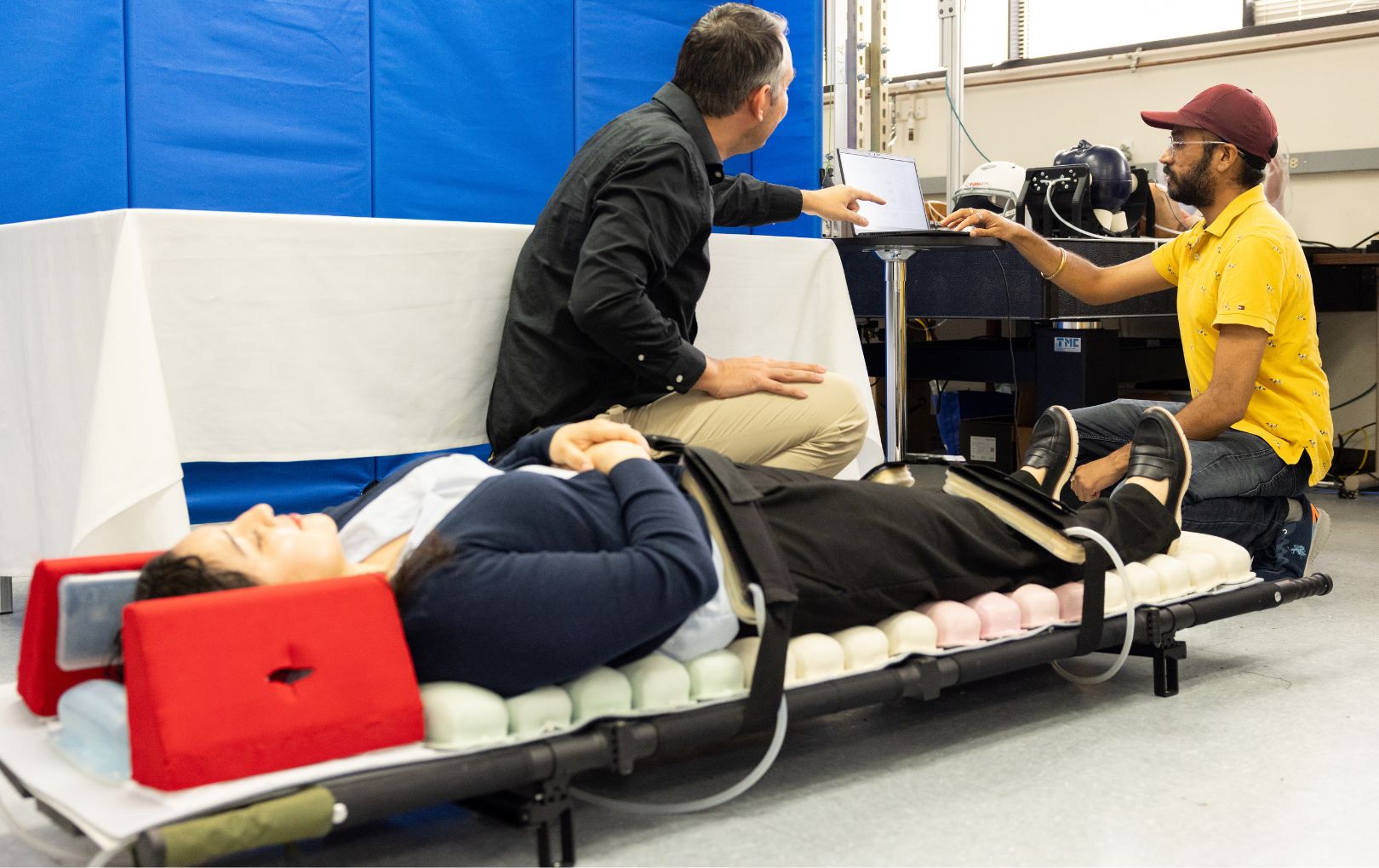New Adaptive Spine Board Aims to Prevent Pressure Injuries During Long-Distance Medical Transport

In combat zones, disaster relief efforts, and emergency medical evacuations, prolonged immobilization during patient transport can lead to serious complications—among them, pressure injuries. A research team from The University of Texas at Arlington (UTA) and UT Southwestern Medical School has developed a new adaptive spine board (ASB) overlay designed to reduce that risk.
The ASB, which can be used on standard stretchers and spine boards, uses segmented air-cell technology to more evenly distribute pressure across the body. According to a recent study, the device outperforms existing immobilization options in preventing pressure-related injuries, such as ulcers and bedsores.
A Common but Overlooked Risk
Pressure injuries—also known as pressure ulcers or bedsores—occur when prolonged pressure on the skin and underlying tissue cuts off blood flow, leading to tissue damage and, in severe cases, open wounds. The issue is particularly acute in long-distance transports, which can sometimes exceed 16 hours. Research from previous conflicts shows that more than half of U.S. casualties evacuated during the Iraq War developed pressure injuries before reaching medical facilities.
Existing solutions like vacuum spine boards help but often fail to keep pressure levels below recommended safety thresholds. Many military-issue stretchers have been found to concentrate pressure on vulnerable body regions, including the back of the head, base of the spine, buttocks, and heels.
A New Approach: Five-Zone Pressure Redistribution
The ASB overlay developed by the UTA and UT Southwestern team is divided into five zones:
- Head and neck
- Upper trunk
- Buttocks and pelvis
- Thighs
- Feet and heels
Each segment uses sensor-driven air cells that automatically adjust to optimize pressure distribution.
“The ability to dynamically adjust pressure so that no vulnerable body regions experience excessive weight is a breakthrough for medical evacuation,” said Muthu B.J. Wijesundara, principal research scientist at the University of Texas at Arlington Research Institute (UTARI).
An embedded algorithm compensates for environmental factors such as temperature and barometric pressure, maintaining consistent support even in variable conditions like aircraft cabins or field environments.
Potential Beyond Military Use
While designed with military applications in mind, the ASB overlay could have significant value in civilian healthcare settings. Patients with spinal injuries, those in ambulance transport, or individuals involved in disaster evacuations could all benefit from reduced risk of pressure injuries during immobilization.
“Beyond military use, the ASB overlay could prove valuable in civilian medical transport, particularly for spinal injury patients who are at high risk for pressure ulcers” said Wijesundara.
High Cost and High Stakes
The consequences of pressure injuries extend far beyond patient discomfort. According to the Agency for Healthcare Research and Quality (AHRQ):
- Each case may cost up to $151,700
- Annual healthcare expenses related to pressure injuries reach $11.6 billion
- Around 60,000 deaths each year in the U.S. are attributed to pressure injuries
“We developed an algorithm that compensates for environmental variables, such as temperature and barometric pressure changes, ensuring consistent performance across varying conditions,” Wijesundara added. “Testing showed that the ASB overlay outperformed typical equipment used in casualty transport.”
Next Steps
The research team—comprising Veysel Erel, Allison Palomino, Alexandra Jamieson, Inderjeet Singh, Saurav Kumar (UTA), and Yi-Ting Tzen (UT Southwestern)—plans further studies to evaluate usability in real-world transport conditions. As military and civilian systems rely more heavily on long-distance aeromedical evacuation, such innovations could become critical components of standard patient care.
Funding for this project was provided by the Trauma Research and Combat Casualty Care Collaborative of the University of Texas System.






